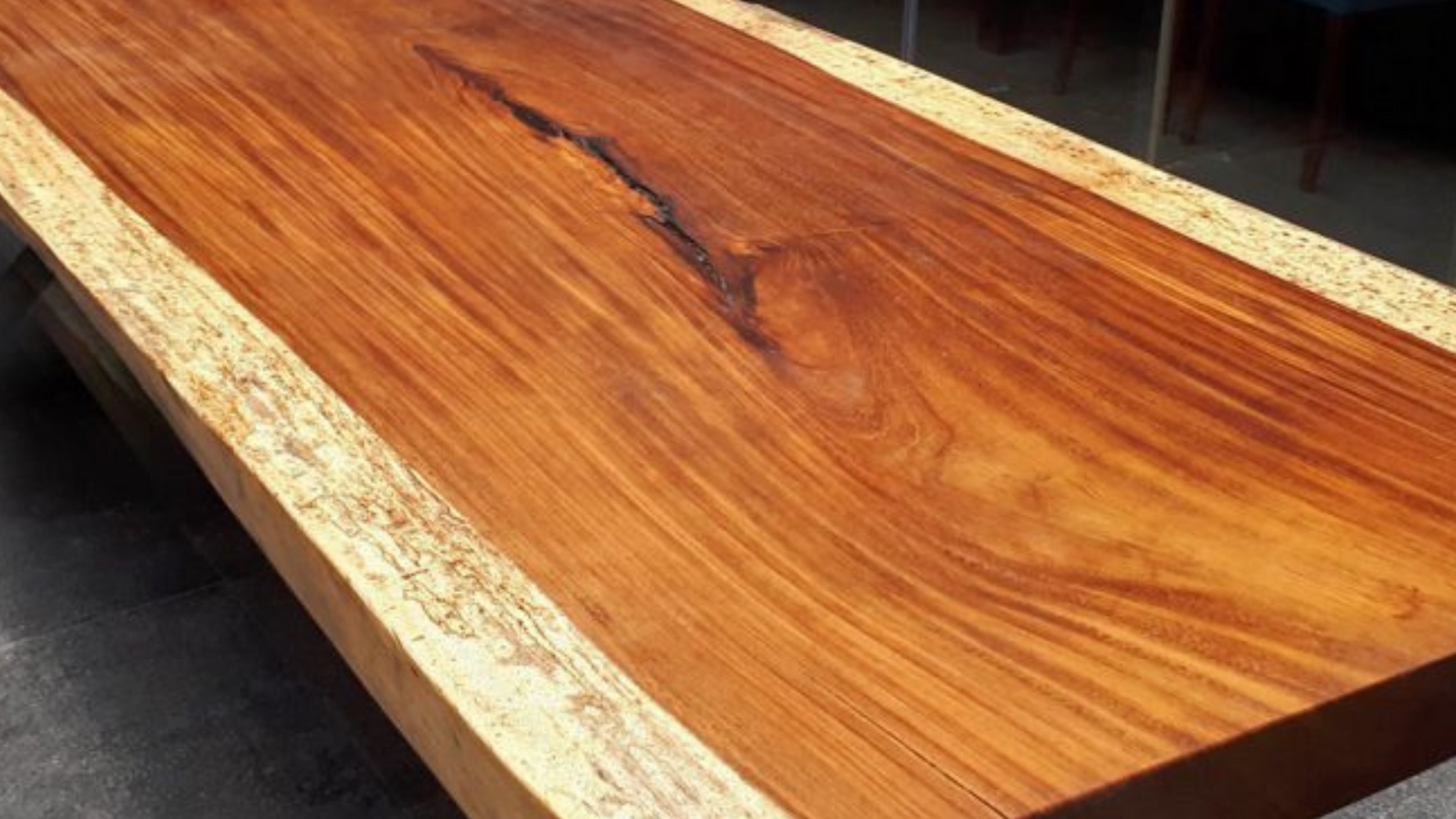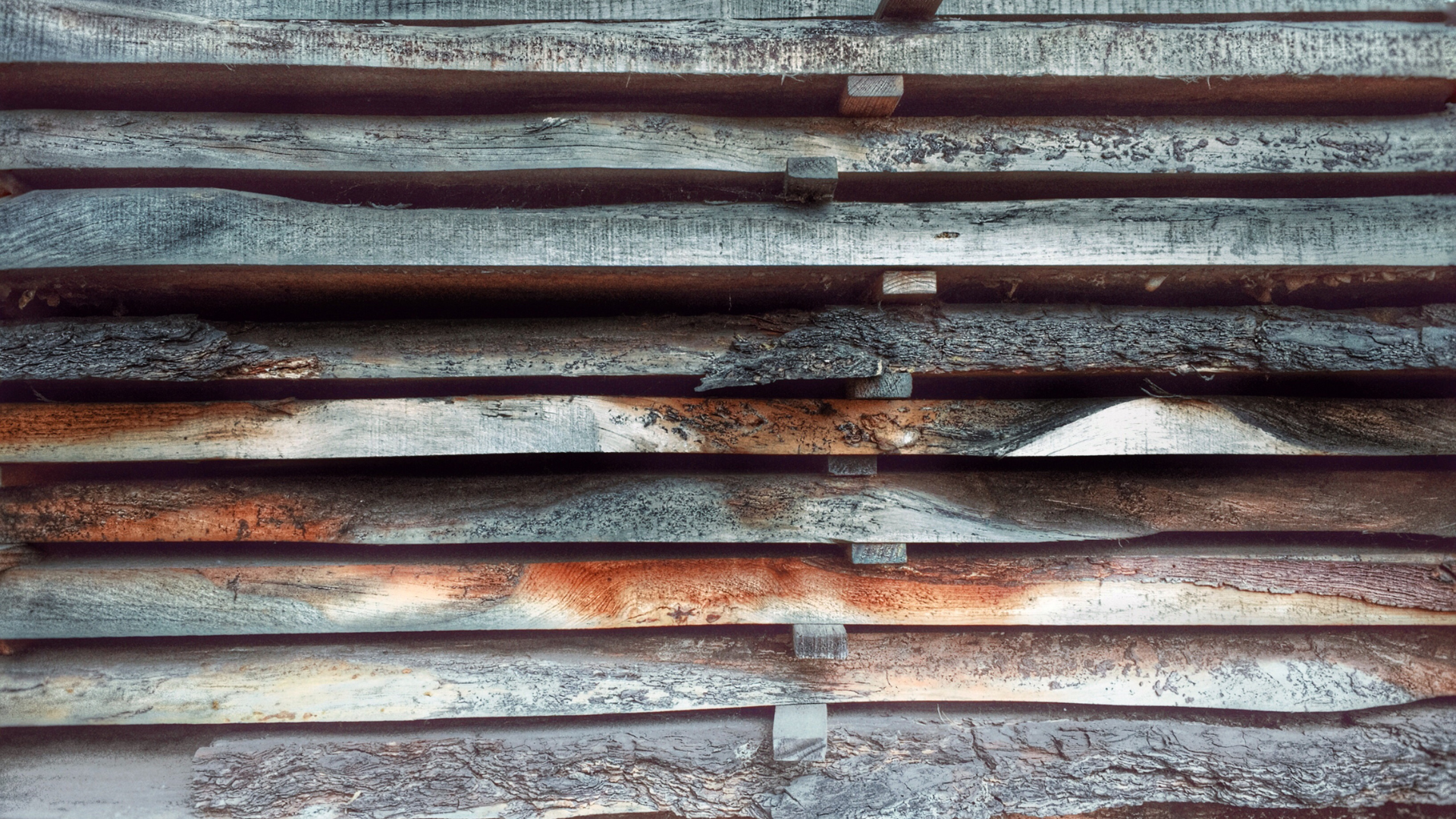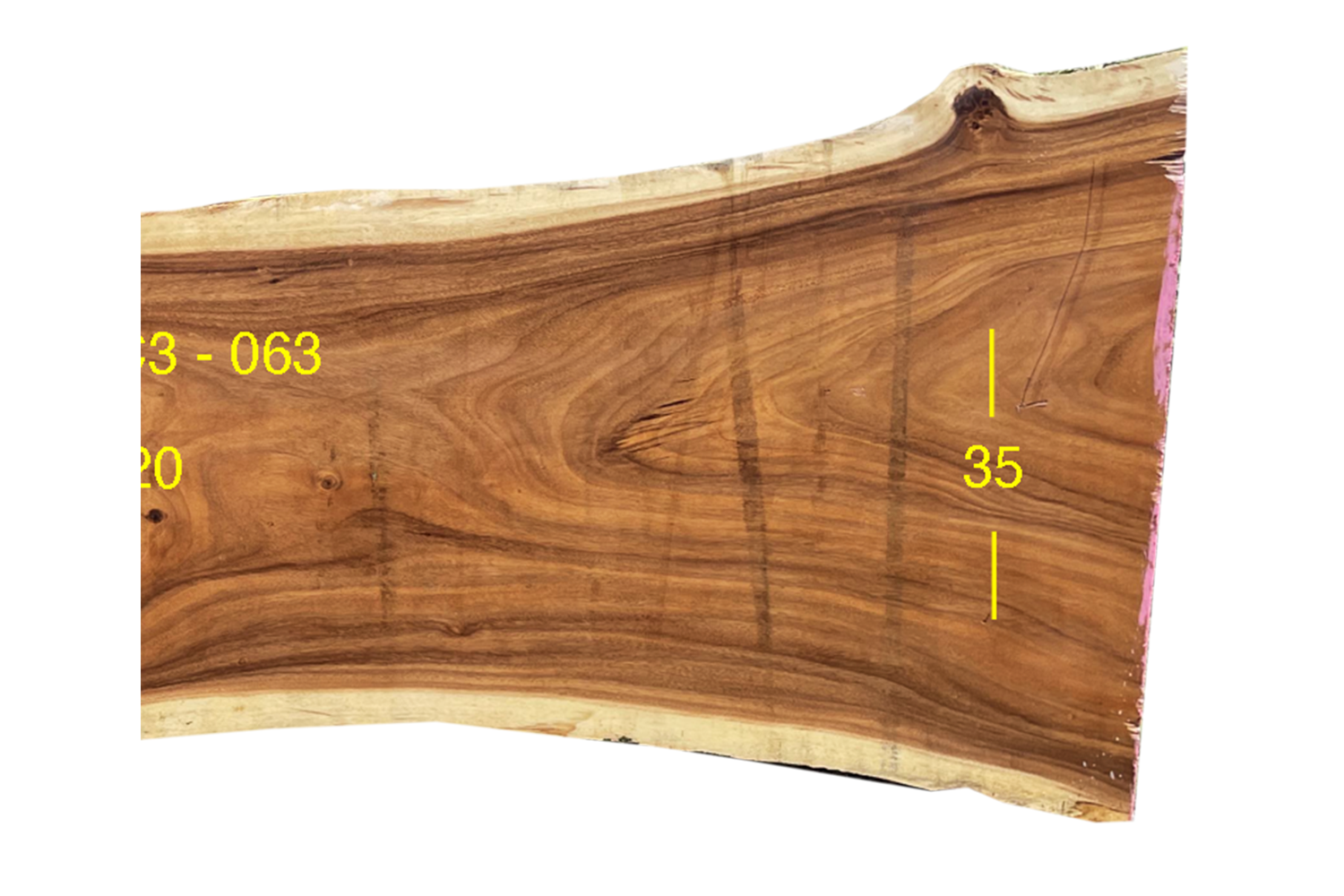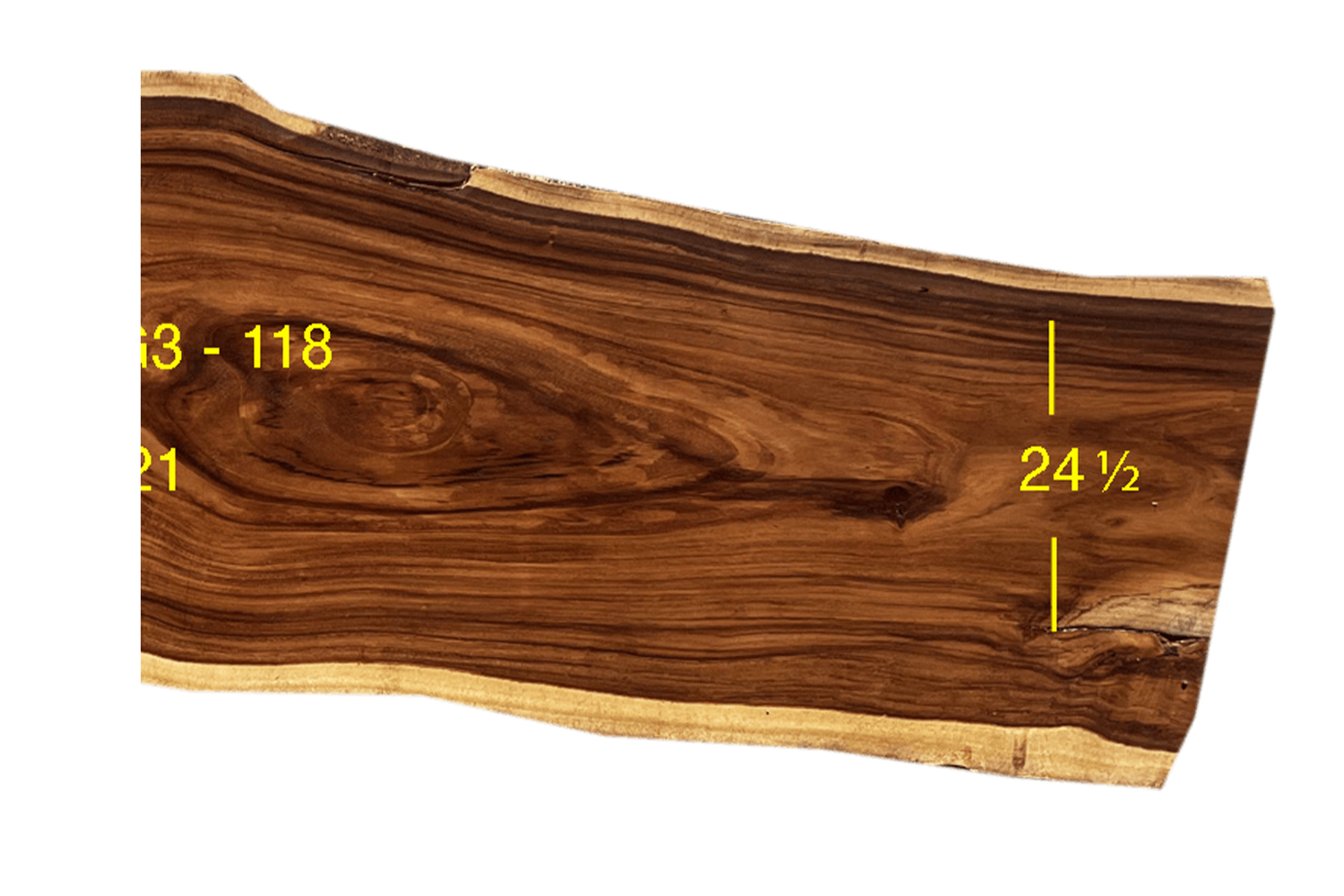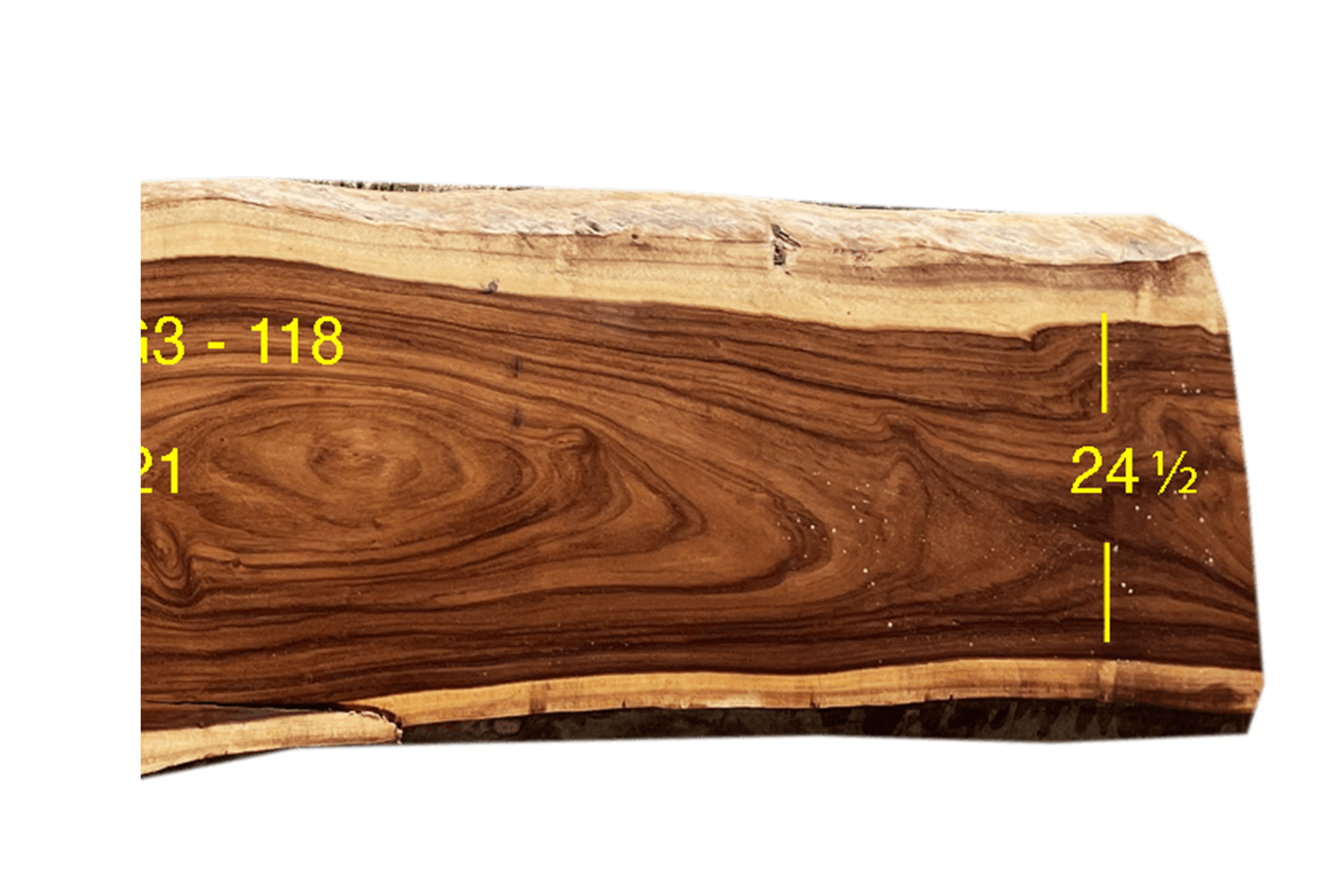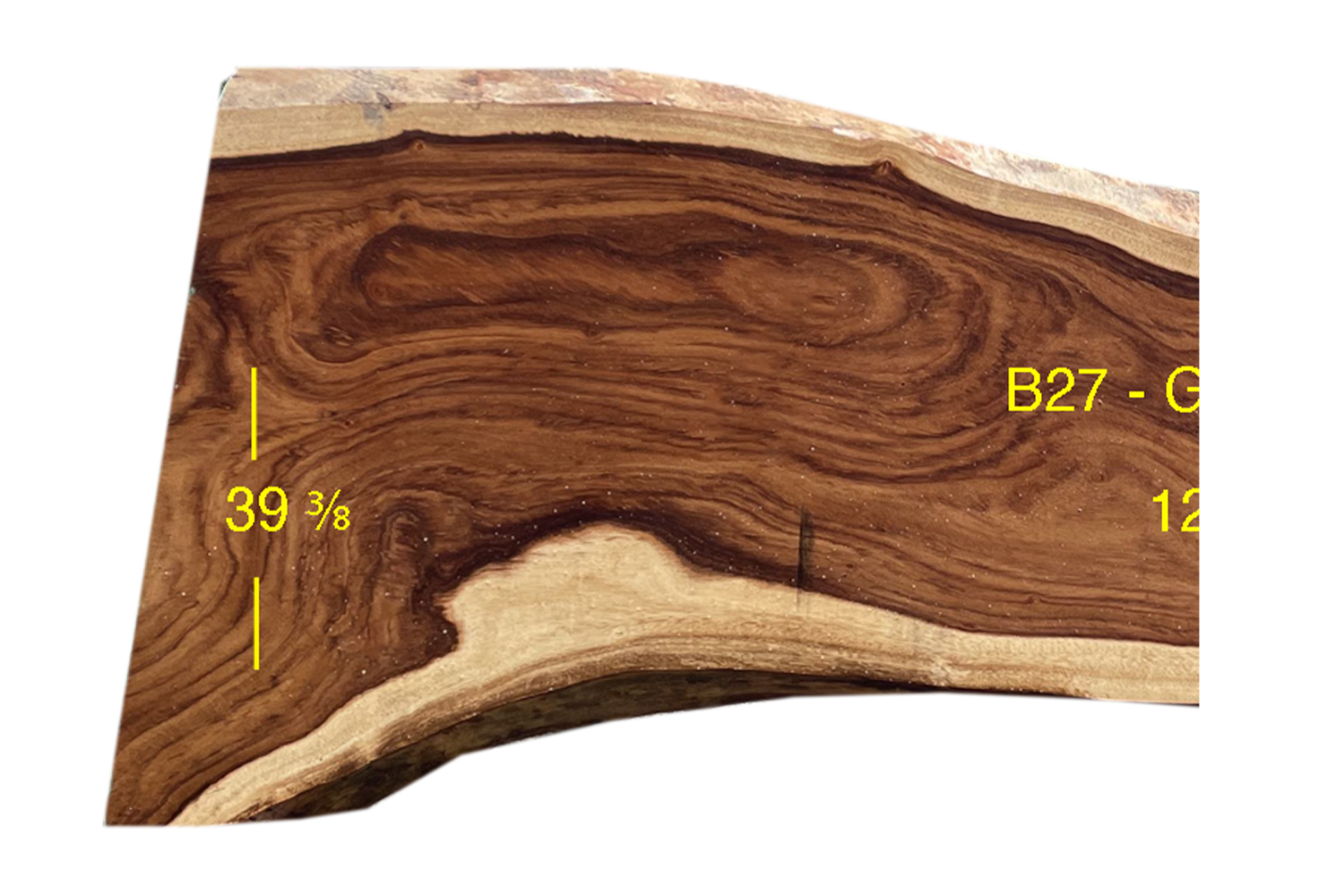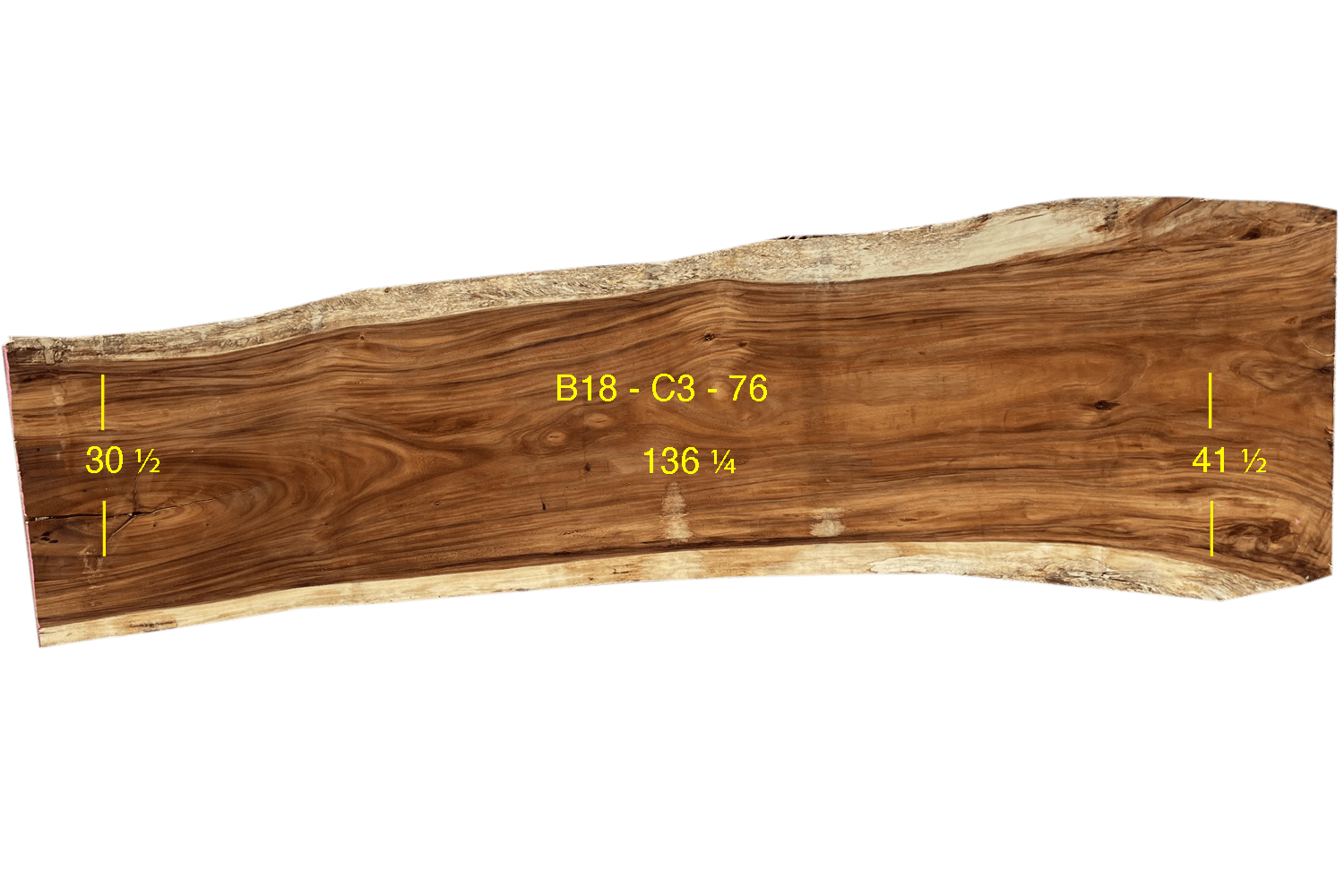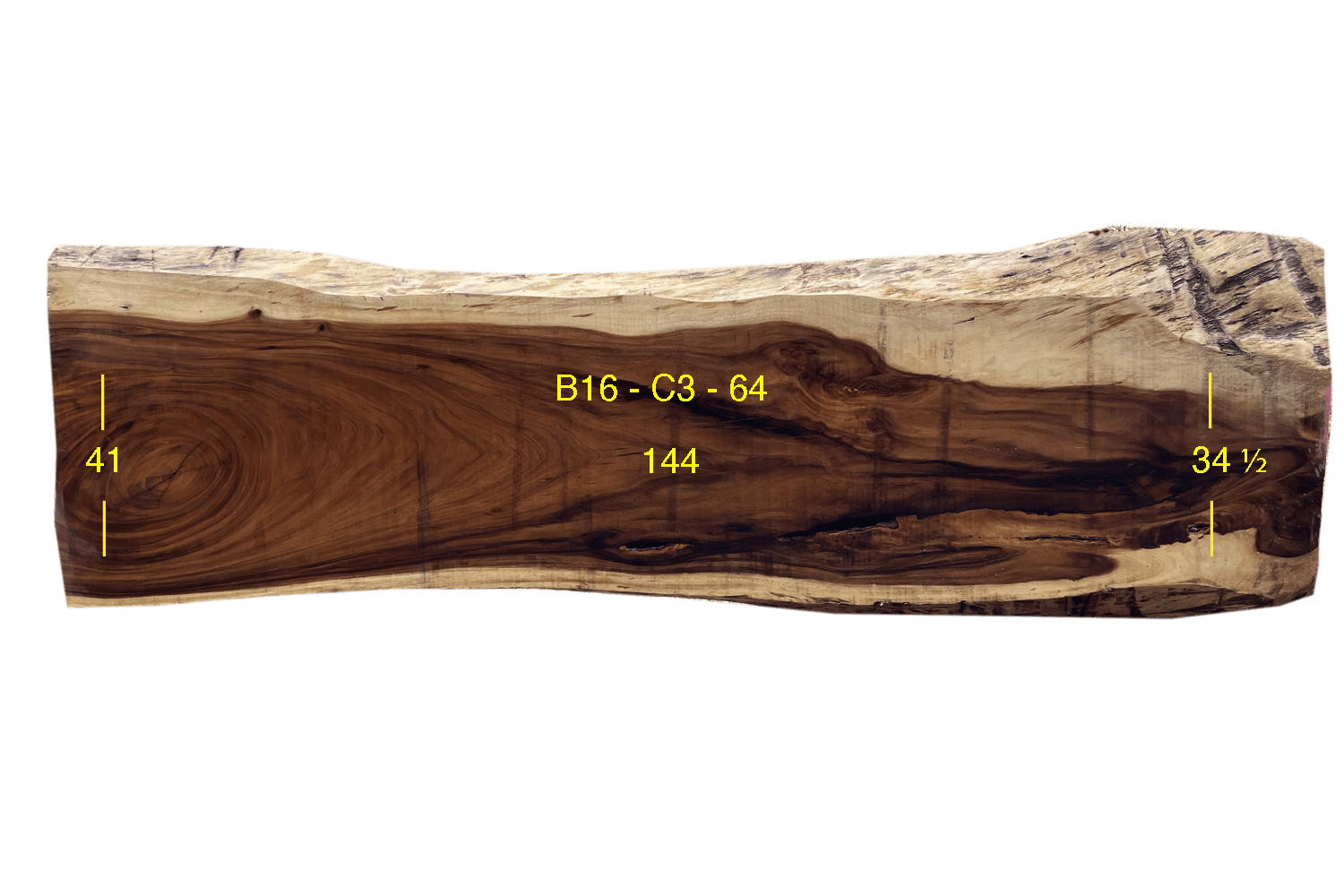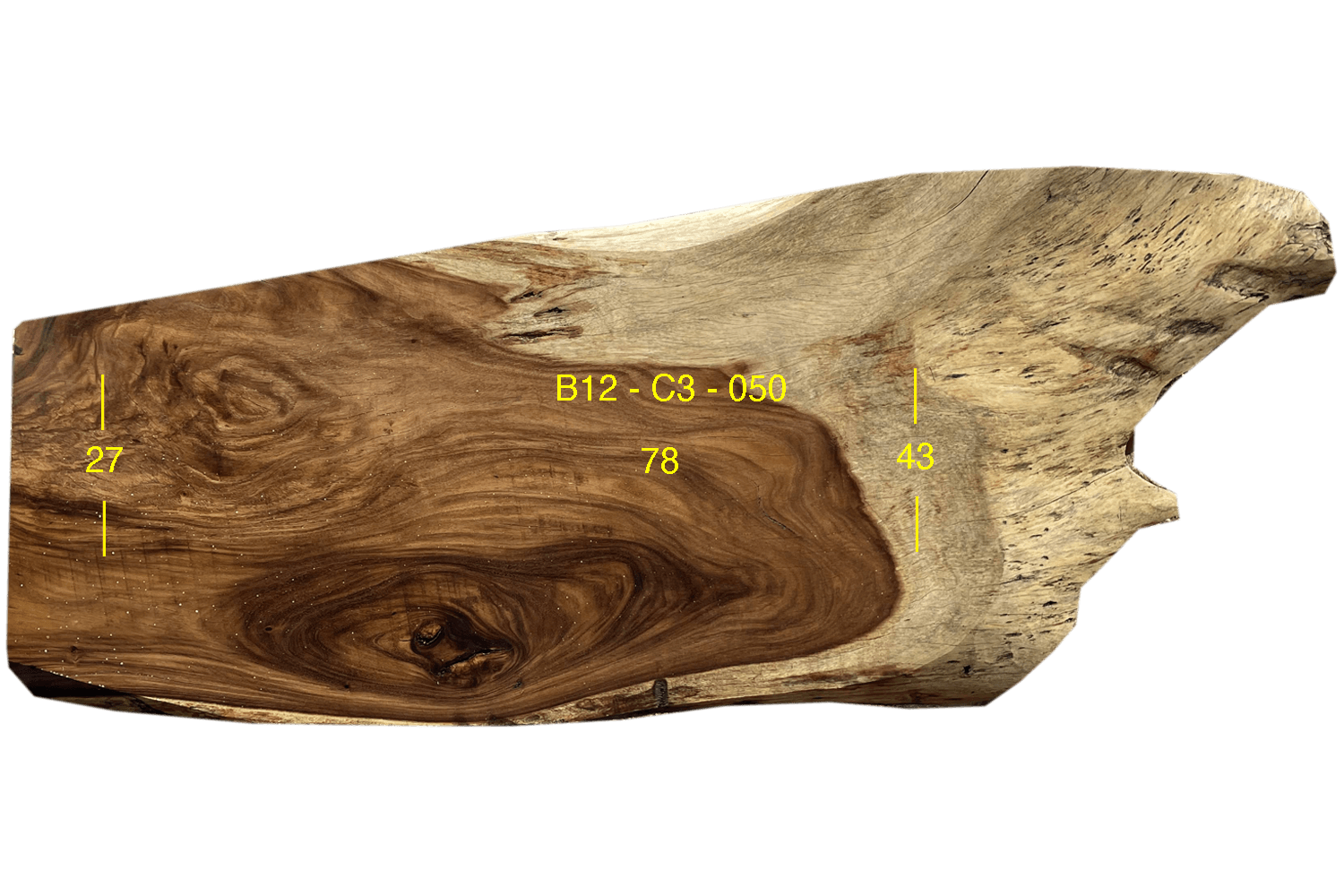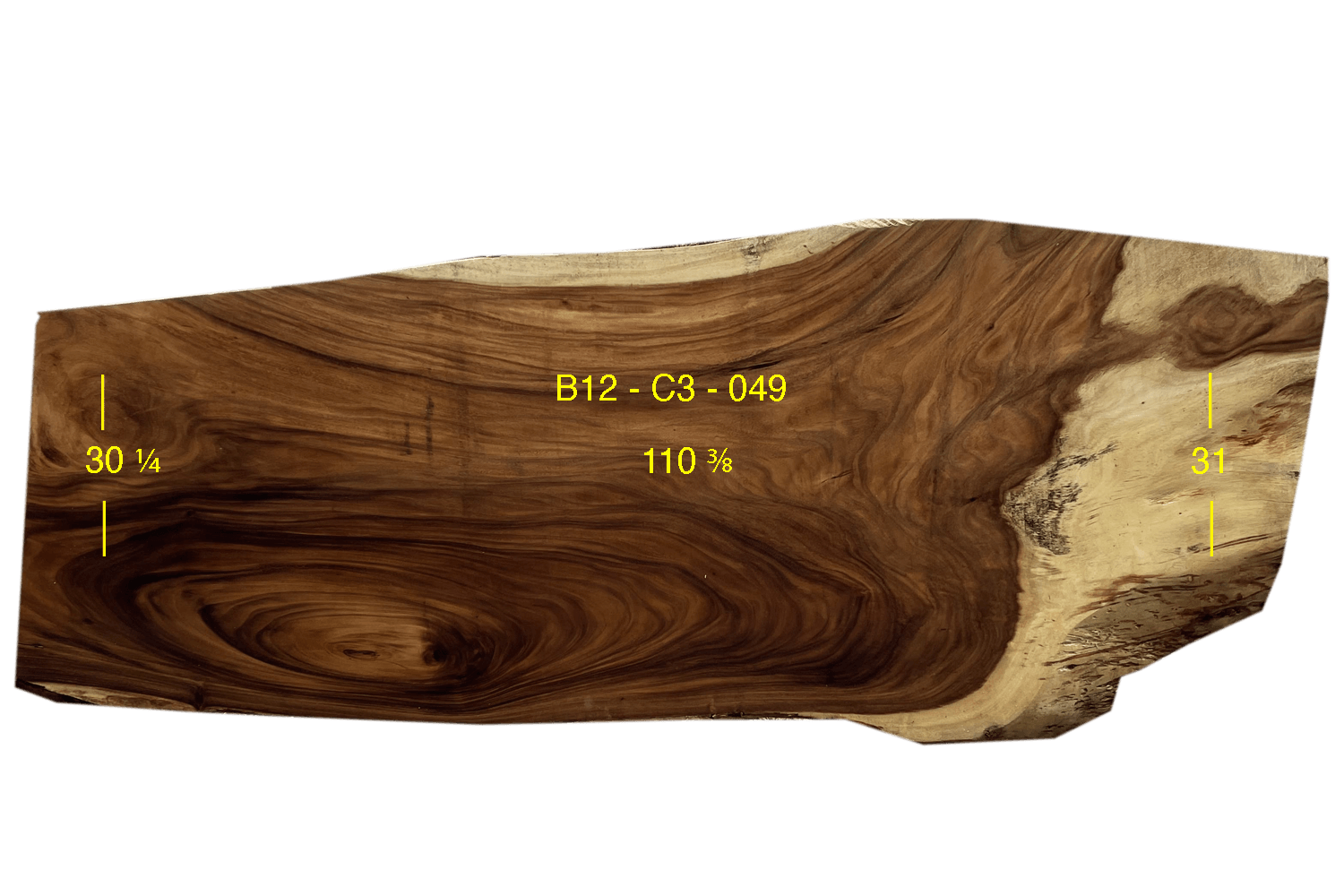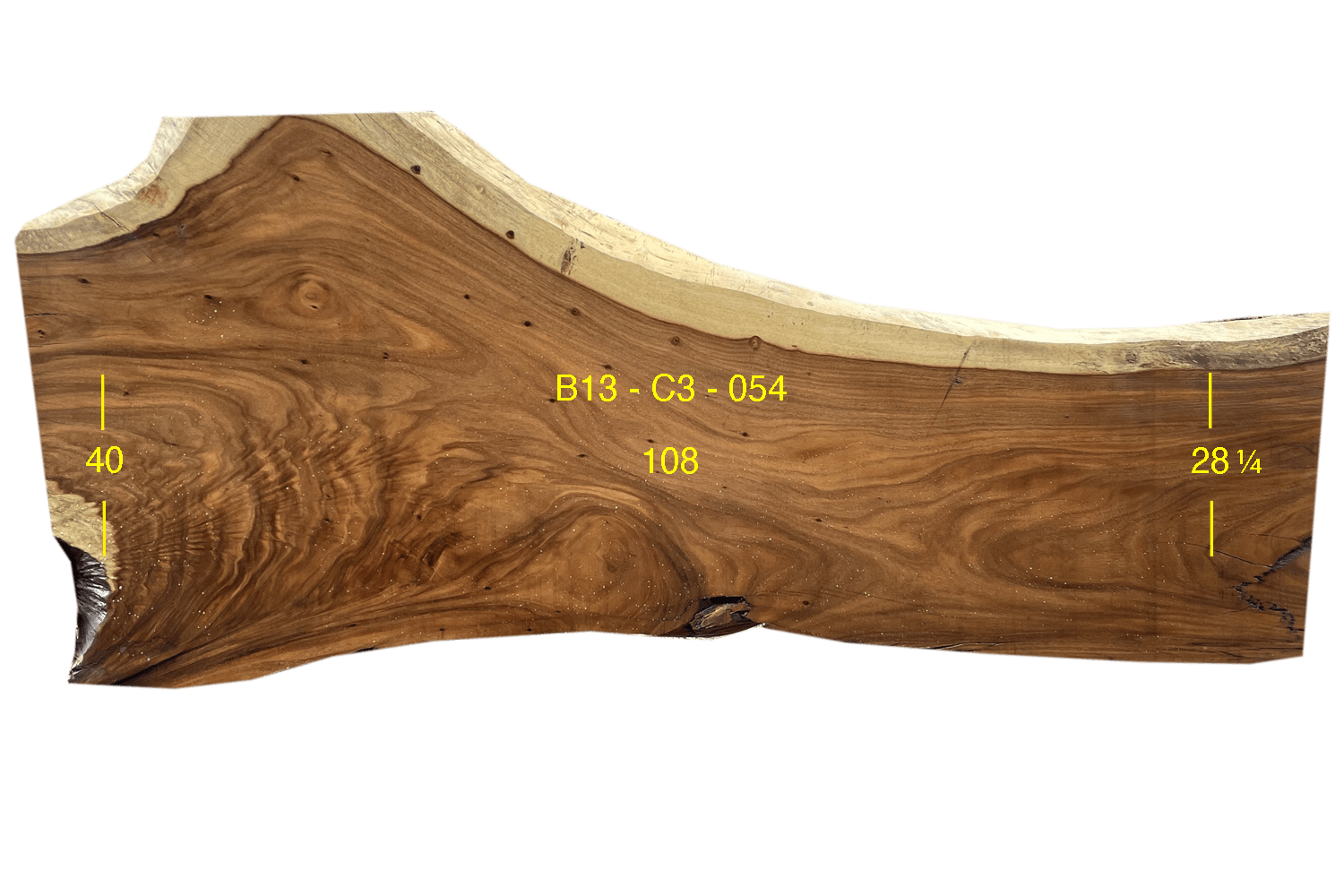What is Parota wood and its properties?
Parota wood, also known as Guanacaste or Elephant Ear tree, is a type of hardwood that originates from the Parota tree found in tropical regions of Central and South America. This tree is part of the legume family and can grow up to 100 feet tall with a diameter of 7-9 feet. The wood itself is highly sought after for its unique properties and has been gaining popularity in the world of sustainable design.
One of the most notable characteristics of Parota wood is its stunning natural beauty. The heartwood ranges from light to dark brown with distinct grain patterns, while the sapwood tends to be lighter in color. This contrast creates a beautiful visual appeal that makes it ideal for interior design and furniture making.
Aside from its aesthetic value, Parota wood also boasts impressive durability and strength. It has a Janka hardness rating (measurement of wood's resistance to wear and denting) comparable to other popular hardwoods such as oak and maple. This makes it suitable for high traffic areas or heavy-duty furniture pieces that require strong structural support.
Are you a wood enthusiast? At Costa Rica Mill we offer you unique and high quality slabs, contact us here and get them now!
The benefits of using Parota wood slabs in eco-friendly design
One of the major benefits of using Parota wood slabs in eco-friendly design is their sustainable sourcing. The Parota tree is fast-growing and prolific, making it a highly renewable resource. This means that harvesting Parota wood does not contribute to deforestation or harm natural habitats. In fact, using these trees for lumber can help promote reforestation efforts in areas where they are grown.
Additionally, Parota wood is often sourced from fallen or damaged trees rather than being cut down specifically for lumber. This reduces waste and minimizes the environmental impact of logging. Some companies even ensure that their Parota wood comes from sustainably managed forests with responsible harvesting practices.
In terms of durability, Parota wood is known for its strength and resistance to warping and cracking over time. This makes it a long-lasting material that can withstand heavy use without needing frequent replacements or repairs. As such, furniture made from Parota wood slabs has a longer lifespan compared to other materials like particle board or MDF (medium-density fiberboard). This quality aligns with one of the key principles of sustainability: reducing waste by choosing products with extended lifespans.
Do you want to know our facilities? Book a call and we will give you a tour of our store
How Parota wood slabs are harvested sustainably
To ensure that Parota wood slabs are harvested sustainably, several measures have been put in place by responsible manufacturers. The first step is to only source Parota from well-managed forests or plantations where trees are grown specifically for harvest. This helps to minimize the impact on natural forests and biodiversity.
In addition to sourcing from sustainable forests, most manufacturers also follow strict guidelines set by organizations such as the Forest Stewardship Council (FSC) or Rainforest Alliance. These organizations promote responsible forestry practices that take into account environmental protection, social responsibility, and economic viability.
When it comes to actually harvesting the Parota wood slabs, great care is taken to ensure minimal impact on the trees and surrounding ecosystem. The process involves selectively cutting mature trees instead of clear-cutting entire areas. This allows younger trees to continue growing and ensures that there is no disruption of habitats for wildlife.
Looking for material for your creative projects? We offer you a diverse selection of Parota and Monkey pod slabs, carefully chosen and prepared, take a look at our website!
Examples of sustainable designs using Parota wood slabs
In this section, we will discuss some examples of sustainable designs that utilize Parota wood slabs, showcasing its versatility and potential for creating beautiful yet environmentally friendly spaces.1. Furniture Design: One of the most common uses of Parota wood slabs is in furniture design. The natural beauty and durability of this wood make it an ideal choice for creating stylish and long-lasting pieces such as tables, chairs, cabinets, and shelves.
2. Flooring: Parota wood slabs can also be used as flooring material in residential or commercial spaces. Its strength and resistance to wear make it an excellent alternative to traditional hardwood floors.
3. Wall Cladding: Using Parota wood slabs as wall cladding is another way to incorporate sustainability into design projects. The rich color variations and organic textures create a visually stunning backdrop while reducing the need for harmful chemical treatments or paint finishes.
4. Countertops: In kitchen or bathroom design, using Parota wood slab countertops instead of traditional materials such as granite or marble can significantly reduce the environmental impact of construction projects. These countertops are not only durable but also non-toxic and easy to maintain.
5. Lighting Fixtures: For those looking for more creative ways to use Parota wood slabs in their designs, incorporating them into lighting fixtures is an excellent option. By crafting pendant lights or chandeliers from these natural wooden pieces, designers can add a touch of eco-friendliness and warmth to any space.
The impact of choosing Parota wood over other materials on the environment
One of the main reasons why Parota wood is considered an environmentally friendly choice is because it comes from sustainably managed forests. These forests are carefully monitored, and only mature trees are harvested, leaving younger ones to continue growing.
This ensures that there is no harm to the overall ecosystem or loss of biodiversity. In contrast, other popular materials like teak and mahogany often come from illegal logging practices that contribute to deforestation and destruction of natural habitats.
Furthermore, Parota wood is native to Mexico and Central America, meaning that it doesn't have to travel long distances to reach markets in other parts of the world. This significantly reduces carbon emissions associated with transportation compared to imported woods like oak or pine.
We are a dedicated source for Parota and Monkey pod slabs. Connecting passionate woodworkers with exquisite and carefully selected materials. For more tips and information, follow us on Facebook and Instagram. Discover all our products at CostaRicaMill.com

